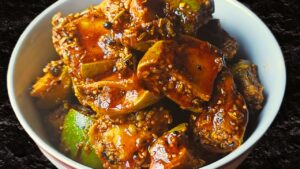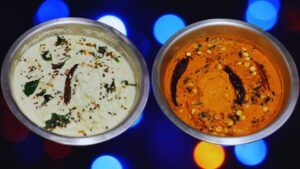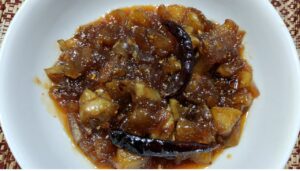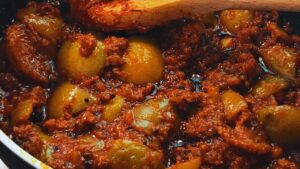Turmeric Pickle, known as Haldi Ka Achar, is a vibrant and flavorful Indian condiment that combines the earthiness of fresh turmeric spice mix, creating a spicy and tangy delight.
This pickle is crafted with a blend of aromatic spices and mustard oil, offering a unique taste that enhances a variety of dishes.
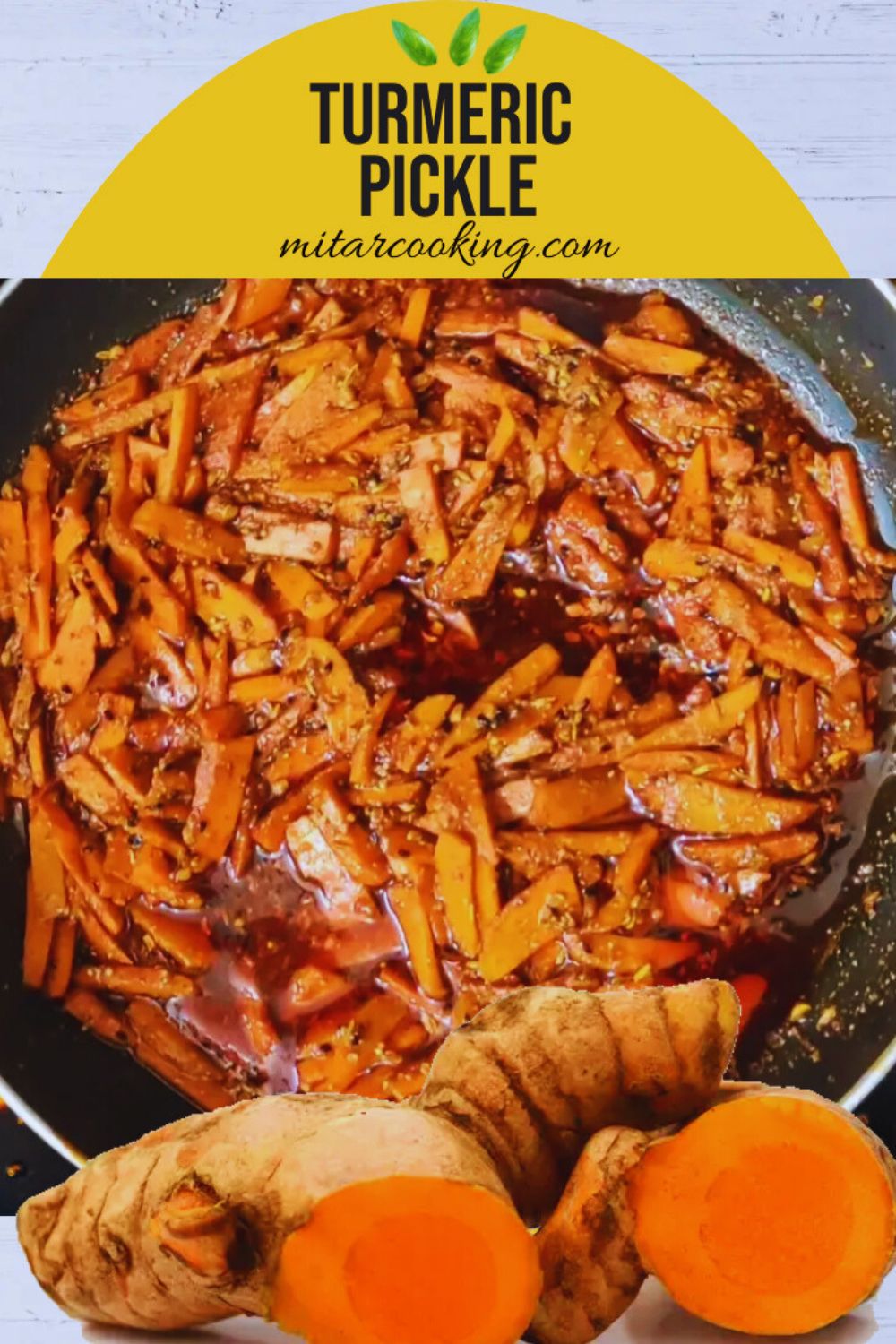
KEY TAKEAWAYS
- Turmeric Pickle, a blend of fresh turmeric and with aromatic spices, offers a vibrant and flavorful addition to Indian cuisine.
- The step-by-step guide emphasizes careful drying of turmeric, spice roasting, and precise oil heating, ensuring a well-balanced and aromatic pickle.
- Airtight containers, proper materials, cleanliness, refrigeration, and using dry utensils are crucial for preserving the pickle’s quality and extending its shelf life.
- The pickle complements a variety of dishes, from Indian bread and rice to snacks, sandwiches, and grilled meats, showcasing its versatile nature.
- The pickle delivers a bold, robust flavor with spiciness, tanginess, and warmth, balanced by careful spice blending and the unique addition of nigella seeds.
How to Make Turmeric Pickle? (Step by Step Guide with Images)
Step 1: Take 250 gm fresh turmeric. Wash it and cut it into thin pieces and then sun dry it.
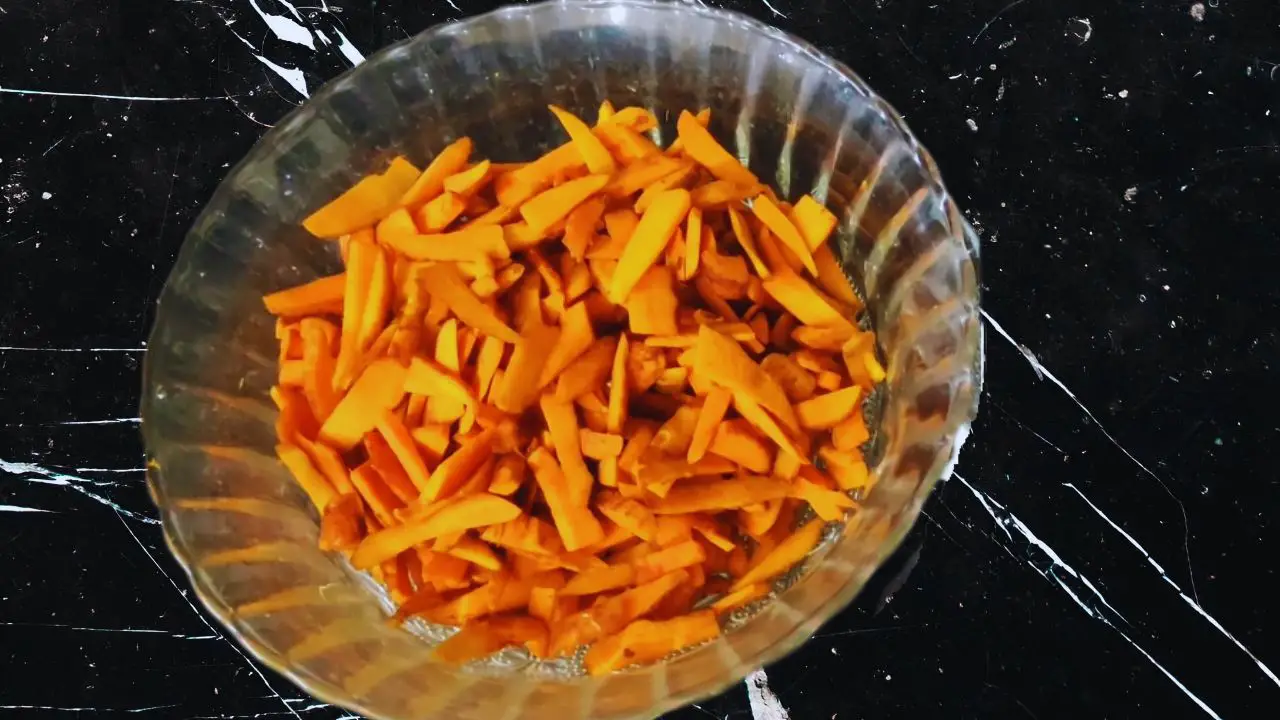
Step 2: Dry roast 2 tbsp fenugreek seeds, 2 tsp yellow mustard seeds, 1 tbsp brown mustard seeds and 2 tbsp fennel seeds. Sauté it for 2 to 3 mins on medium flame. When you smell a nice aroma from these spices, turn of the gas.
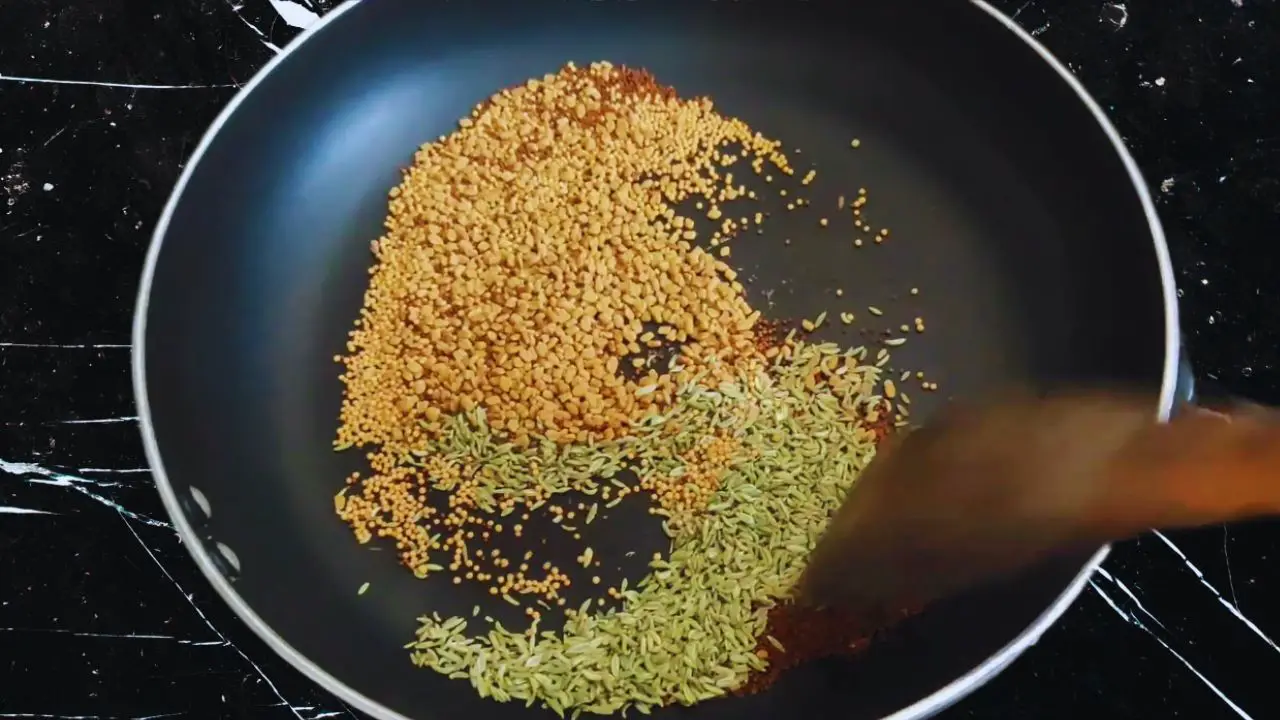
Step 3: Cool the spices and then coarse grind it.
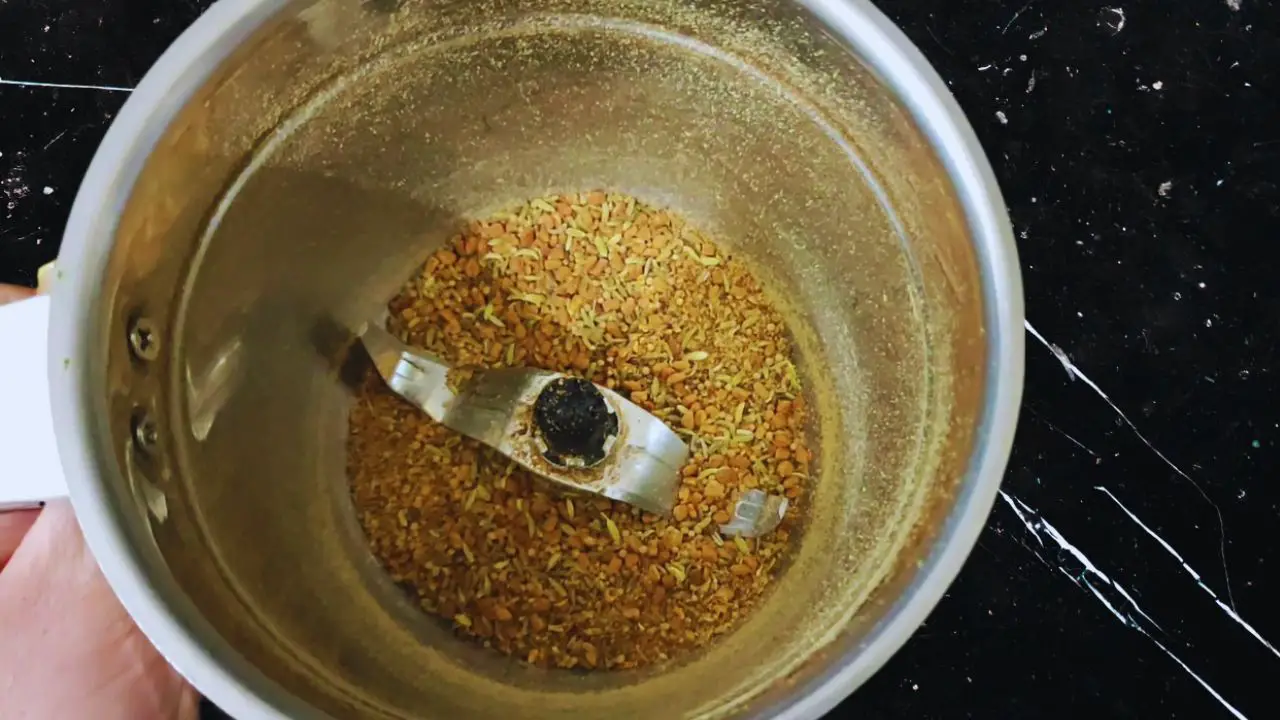
Step 4: Take a pan and add 100 ml mustard oil. Heat it till it is smoking hot.
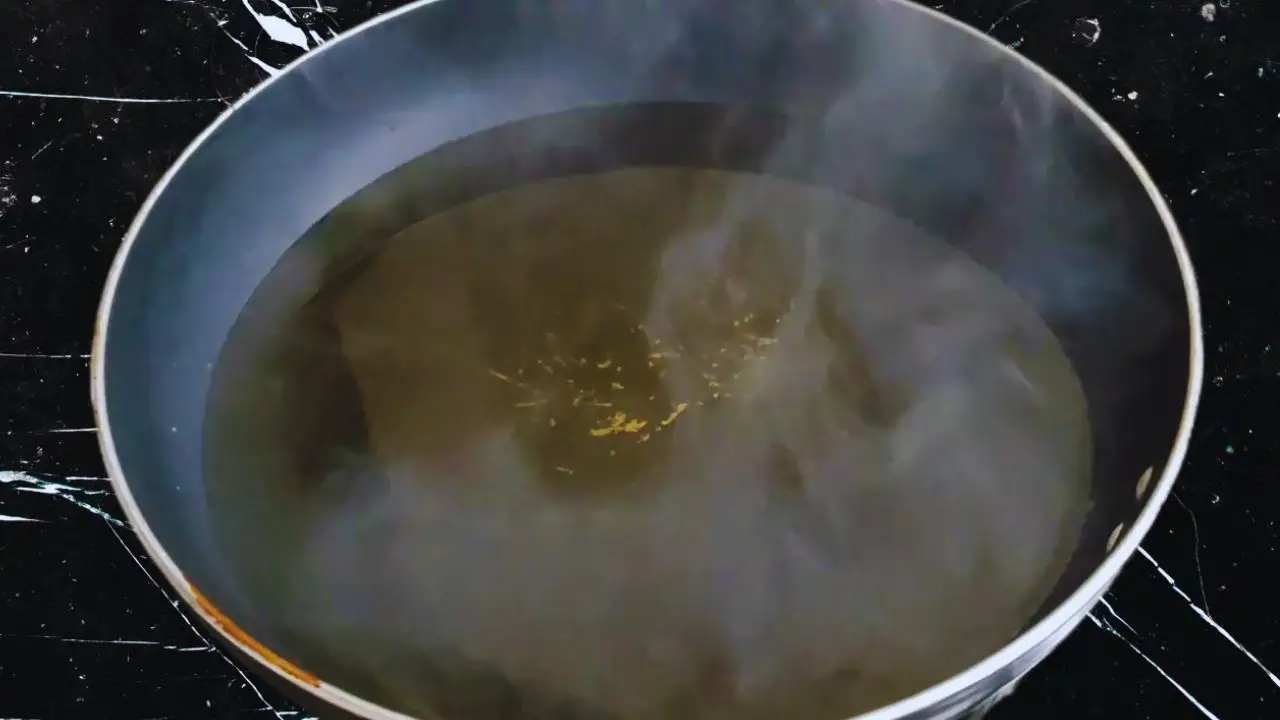
Step 5: Turn of the flame and then add 1 tbsp nigella seeds, 1 tbsp Kashmiri red chili powder, a pinch of Asafoetida and the ground whole spice mix. Mix it nicely.
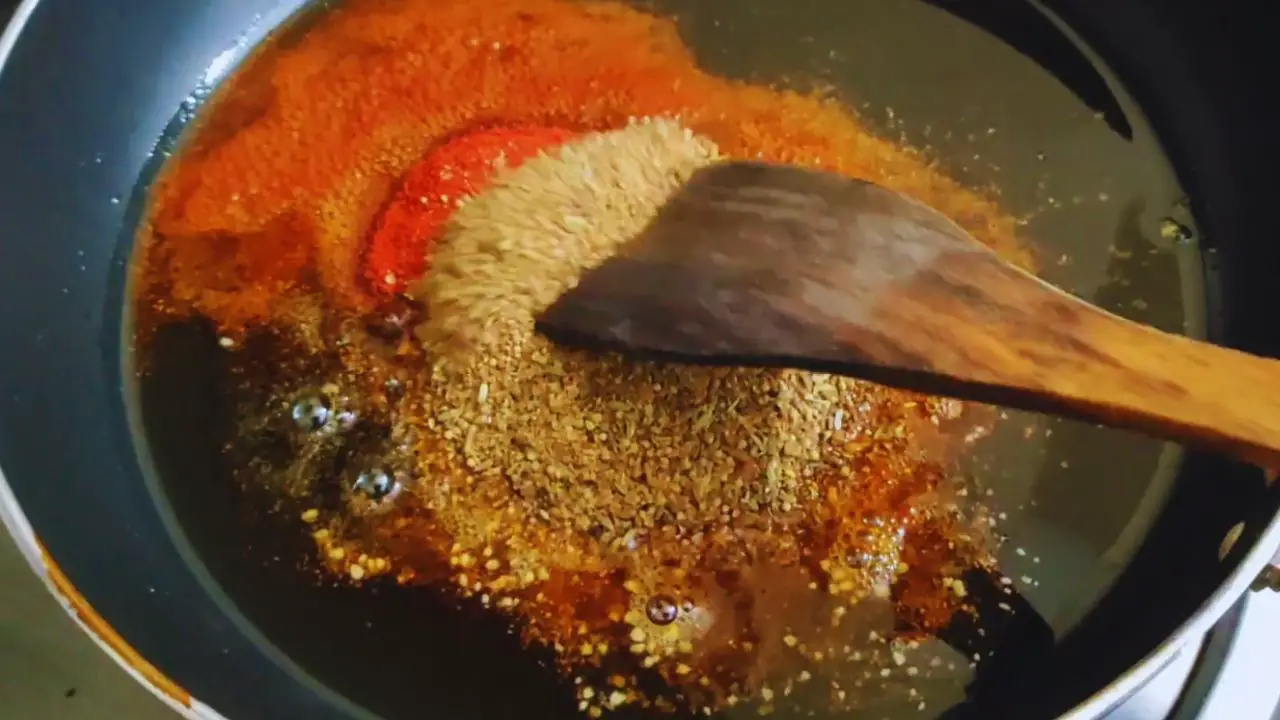
Step 6: After mixing add all the turmeric pieces into the mixture. Then mix everything thoroughly on low flame for 2 to 3 mins.
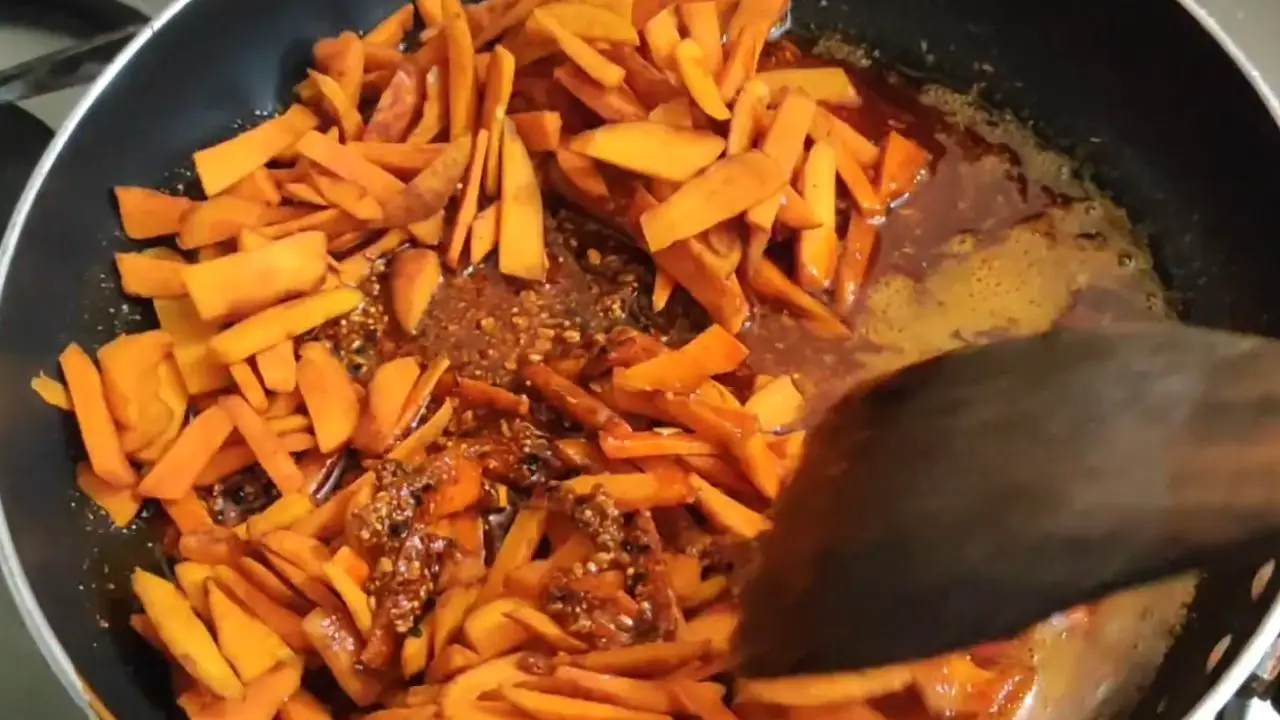
Step 7: Finally add 2 tbsp salt in it and mix it.
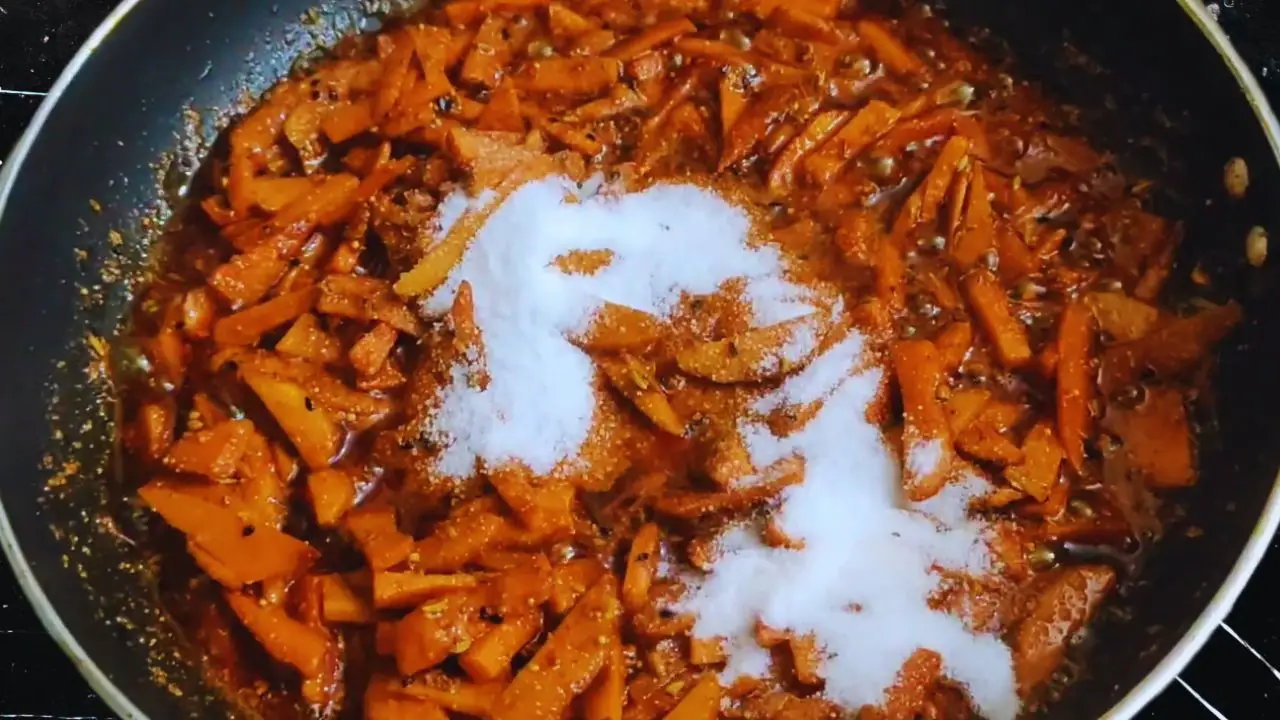
Step 8: Turmeric pickle is ready. You can store this in an air tight container for a longer shelf life.

Pro Tips for Making Turmeric Pickle
Quality of Ingredients Matters: Ensure that you use fresh and high-quality turmeric for the pickle. The flavor and aroma of the pickle heavily depend on the freshness of the ingredients.
Proper Drying of Turmeric: Sun-drying the turmeric slices is crucial. Make sure they are completely dry before using them in the pickle. Any moisture can lead to spoilage.
Balancing Spice Levels: Adjust the quantities of fenugreek seeds, mustard seeds, and fennel seeds according to your spice preference. Taste the spice mix before adding it to ensure it’s balanced.
Careful Roasting of Spices: While dry roasting the spices, be vigilant not to burn them. Burnt spices can impart a bitter taste to the pickle.
Mustard Oil Heating Technique: Heating the mustard oil until it reaches a smoking point helps reduce its pungency. This step is essential for both flavor and preserving the pickle.
Tempering with Nigella Seeds: Adding nigella seeds (kalonji) in the tempering enhances the flavor profile. Ensure the tempering is done with the heat turned off to prevent burning.
Choosing the Right Chili Powder: Kashmiri red chili powder is used for its vibrant color and mild heat. Adjust the quantity based on your spice preference, keeping in mind that the pickle will develop more heat over time.
Uniform Mixing: Thoroughly mix the turmeric pieces with the spice blend. Ensure that each piece is coated evenly for a consistent flavor.
Low Flame Mixing: Mixing the ingredients on a low flame helps them blend well without burning. This slow mixing process allows the flavors to infuse into the turmeric.
Salt Addition: Add salt at the end to avoid drawing out excess moisture from the turmeric during the mixing process. This helps in maintaining the pickle’s texture and shelf life.
Storing Tips for Turmeric Pickle
Use Airtight Containers: Store the and turmeric pickle in airtight containers to prevent exposure to air and moisture, which can lead to spoilage.
Choose Glass or Ceramic Containers: Opt for glass or ceramic containers for storing the pickle. These materials are non-reactive and help maintain the flavors without any transfer of odors.
Ensure Cleanliness: Before storing the pickle, make sure the container is clean and dry. Any residual moisture can affect the quality and shelf life of the pickle.
Leave Some Headroom: When filling the containers, leave a small gap at the top to account for any expansion that may occur.
Store in a Cool, Dark Place: Keep the pickle containers in a cool, dark place away from direct sunlight. Exposure to sunlight can alter the flavors and degrade the quality of the pickle.
Refrigerate for Extended Shelf Life: While the pickle can be stored at room temperature for short durations, refrigeration helps prolong its shelf life. It also slows down any potential fermentation or spoilage.
Use Dry Utensils: When serving the pickle, use dry utensils to prevent introducing moisture into the container. Moisture can lead to bacterial growth and spoilage.
Regularly Check for Spoilage: Periodically check the pickle for any signs of spoilage such as off odors, mold, or changes in color. If you notice anything unusual, discard the pickle.
Separate Small Batches: If making a large quantity of pickle, consider dividing it into smaller batches. This way, you can open and consume one batch while keeping the others sealed and fresh.
Bring to Room Temperature Before Consuming: Allow the pickle to come to room temperature before serving. This enhances the flavors and ensures a more enjoyable eating experience.
What to Serve with Turmeric Pickle?
Indian Breads: Serve the pickle with traditional Indian breads such as chapati, paratha, or naan. The tangy and spicy flavors of the pickle complement the mildness of the bread.
Rice Dishes: Enjoy the pickle as a side with rice dishes like biryani, pulao, or simple steamed rice. The vibrant flavors of the pickle add a zesty kick to the rice.
Curries and Gravies: Pair the pickle with various Indian curries and gravies. The acidity and spiciness of the pickle can balance the richness of creamy curries or add depth to spicier dishes.
Snacks and Appetizers: Use the pickle as a condiment for snacks and appetizers. It goes well with samosas, pakoras, or any fried snacks, adding a burst of flavor.
Sandwiches and Wraps: Spread a thin layer of turmeric pickle on sandwiches or wraps. It can elevate the taste of both vegetarian and non-vegetarian options.
Cheese Platter: Include the pickle in a cheese platter. The bold flavors of the pickle can complement the richness of different cheeses, providing a delightful contrast.
Salads: Add a spoonful of turmeric pickle to salads for an extra punch of flavor. It works well with both green salads and heartier salads with grains or legumes.
Grilled Meats: Serve the pickle alongside grilled meats, such as chicken, lamb, or fish. The spiciness of the pickle can enhance the savory notes of the grilled dishes.
Dosa and Idli: Enjoy the pickle with South Indian dishes like dosa and idli. The bold flavors of the pickle complement the subtle taste of these fermented rice and lentil-based dishes.
How Does Turmeric Pickle Taste?
Spicy Kick: The pickle has a noticeable spiciness, thanks to the Kashmiri red chili powder and the combination of mustard seeds. It provides a warming sensation with each bite.
Tangy Zing: The use of turmeric and mustard oil contributes to a tangy and slightly pungent flavor. The acidity enhances the overall taste of the pickle.
Aromatic and Earthy: The dry-roasted spices, including fenugreek, fennel, and mustard seeds, impart a rich, aromatic, and earthy undertone to the pickle.
Distinct Mustard Flavor: The mustard oil and mustard seeds provide a distinct mustard flavor, adding depth and complexity to the overall taste.
Warm and Savory: The combination of spices, including nigella seeds and asafoetida, adds a warm and savory dimension to the pickle, creating a well-balanced flavor profile.
Bold and Robust: The overall taste is bold and robust, with the intensity of mustard oil and turmeric shining through. It’s a flavor explosion that lingers on the palate.
Mild Bitterness: Careful roasting of the spices is crucial to avoid bitterness, but a slight bitterness may be present due to the nature of turmeric and mustard seeds.
Slight Sweetness: The natural sweetness of turmeric may come through, providing a subtle sweetness that complements the spiciness and tanginess of the pickle.
Well-Infused Turmeric: The turmeric pieces are well-infused with the spice blend, creating a harmonious marriage of flavors and ensuring a consistent taste throughout the pickle.
Savory with a Hint of Nigella Seeds: The addition of nigella seeds during tempering imparts a unique savory note, contributing to the overall complexity of the pickle’s taste.
Balanced Saltiness: The salt is added at the end, contributing to a balanced level of saltiness that enhances the overall taste without overpowering other flavors.
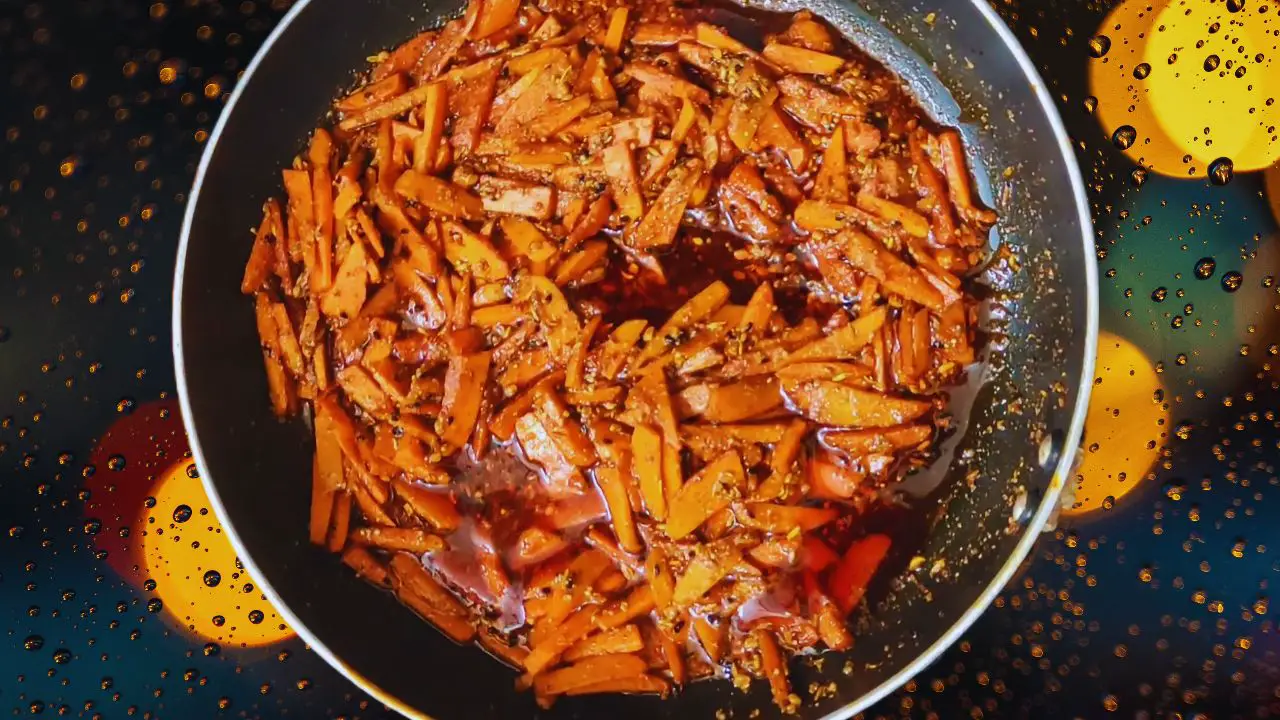
Turmeric Pickle Alternatives
Lemon Pickle (Niboo Ka Achar): Tangy and zesty, lemon pickle is made by preserving lemon wedges or slices in a blend of spices, oil, and sometimes vinegar. It adds a burst of citrusy flavor to meals.
Mango Pickle (Aam ka Achar): A classic Indian pickle, mango pickle is made from raw mangoes and seasoned with a mix of spices, including fenugreek, mustard seeds, and chili powder. It has a sweet, sour, and spicy taste.
Mixed Vegetable Pickle (Achaari Mixed Pickle): A medley of various vegetables like carrots, cauliflower, and green beans, mixed vegetable pickle is seasoned with spices and often includes a tangy element. It offers a diverse range of flavors in every bite.
Garlic Pickle (Lehsun ka Achar): Featuring whole or chopped garlic cloves, this pickle is known for its intense and pungent flavor. It is seasoned with mustard seeds, fenugreek, and chili powder for a robust taste.
Green Chili Pickle (Hari Mirch ka Achar): Made with fresh green chilies, this pickle packs a spicy punch. The chilies are often slit and filled with a spice mix, giving them a fiery and flavorful profile.
Recipe Card
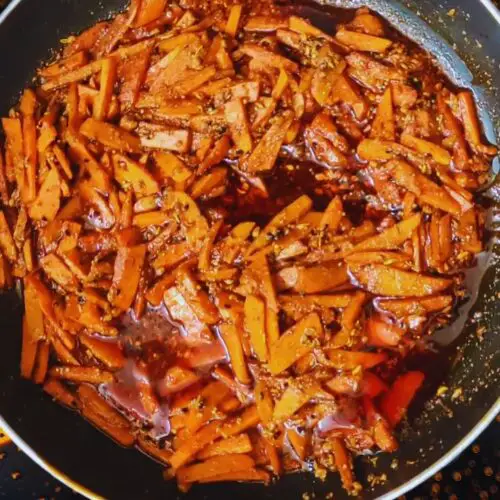
Turmeric Pickle
Ingredients
- 250 grams Fresh turmeric
- 100 ml Mustard oil
- 2 tbsp Fenugreek seeds
- 2 tsp Yellow mustard seeds
- 1 tbsp Brown mustard seeds
- 2 tbsp Fennel seeds
- 1 tbsp Kashmiri red chili powder
- ¼ tsp Asafoetida
- 1 tbsp Nigella seeds
- Salt as per taste
Instructions
- Take 250 grams of fresh turmeric. Wash it properly and cut it into thin pieces. Then, let it dry in the sun until it becomes completely dry.
- In a pan, dry roast 2 tablespoons of fenugreek seeds, 2 teaspoons of yellow mustard seeds, 1 tablespoon of brown mustard seeds, and 2 tablespoons of fennel seeds. Stir and roast them for 2 to 3 minutes over medium heat until you smell a nice aroma. Turn off the heat.
- Let the roasted spices cool down, and then grind them coarsely.
- Take a pan and pour 250 ml of mustard oil. Heat the oil until it becomes very hot and starts to smoke slightly.
- Turn off the heat and add 1 tablespoon of nigella seeds, 1 tablespoon of Kashmiri red chili powder, a pinch of Asafoetida, and the coarsely ground spice mix. Mix these ingredients well.
- Once mixed, add all the dried turmeric pieces into this mixture. Stir everything together thoroughly over low heat for about 2 to 3 minutes.
- Finally, add 2 tablespoons of salt and mix it well into the pickle.
- Your Turmeric Pickle is now ready! Store it in an airtight container to keep it fresh for a longer time.
Notes
Nutrition Info (Estimation Only)
Conclusion
In conclusion, Turmeric Pickle is a versatile and aromatic addition to the world of pickles, showcasing the rich and bold flavors of its key ingredients.
Whether paired with Indian bread, rice dishes, curries, or even as a side for grilled meats, this pickle brings a harmonious blend of spiciness, tanginess, and warmth to elevate your gastronomic experience.
With proper preparation and storage, it stands as a delightful accompaniment to a wide range of meals.

